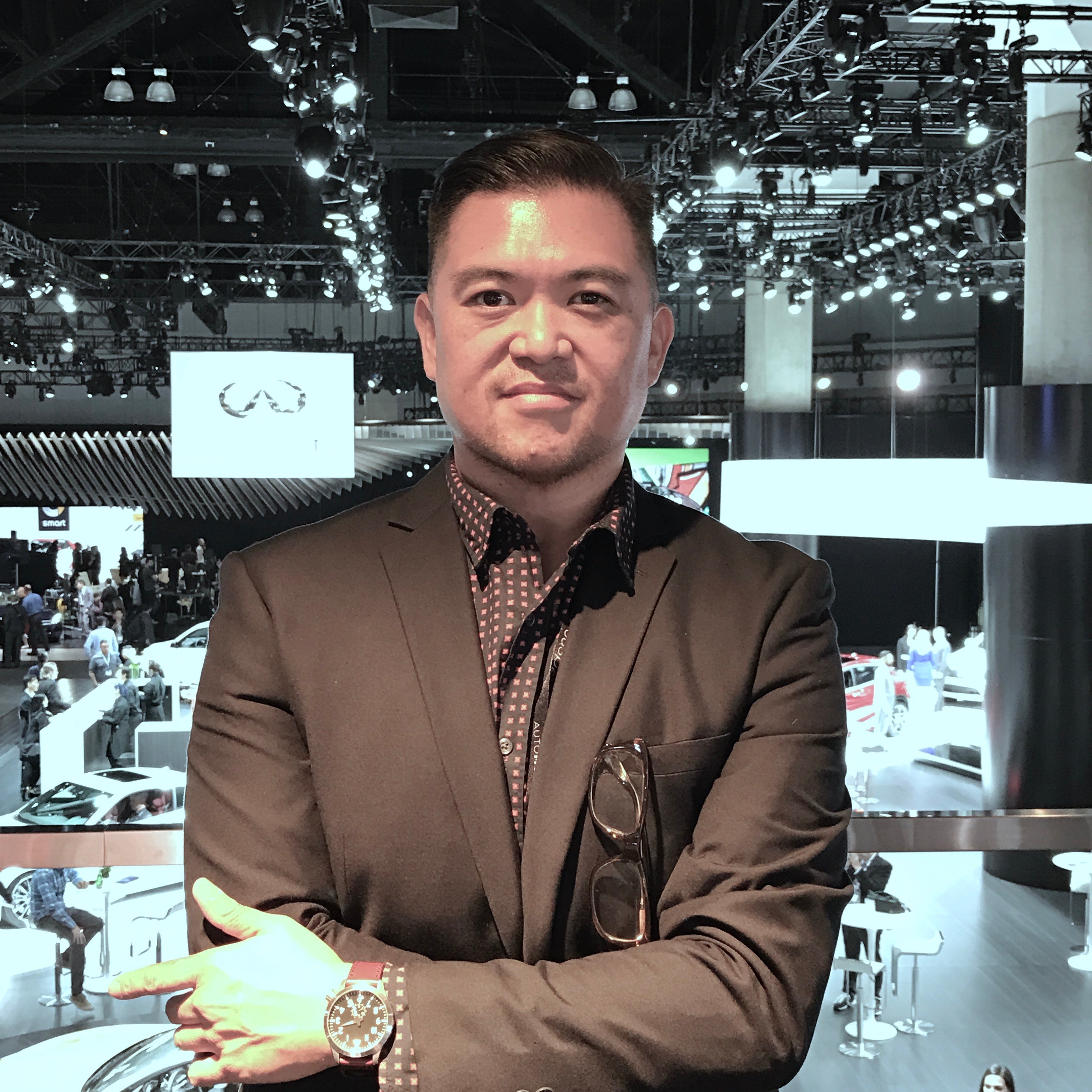Unlike many other cars bearing Hartge badges, this BMW E28 H5S was actually built at Hartge's headquarters in Merzig, Germany. That makes this rare gem even more valuable to collectors of rare BMWs.
It’s not often that you see a real Herbert Hartge-built BMW here in the US. Most of the time, the ones you see here are US-sold cars that are then rebuilt into Hartge cars by enthusiasts. Don’t get us wrong—that’s not a slight. Building a car using all Hartge tuning parts is nearly as tough as getting the original Hartge-built cars themselves. In order to build a car using parts, one would have to contact and convince the most connected aficionados of rare vintage BMW parts to source the exquisitely rare Hartge parts from Germany, as this is a pretty obscure brand that wasn’t imported by European tuners in the United States very often.
As rare as the parts are themselves, there were even less Hartge cars brought over to the United States, despite there being two official importers stateside. This is why we had our minds blown when we first laid eyes on Ken Wong's 1985 Hartge H5S.
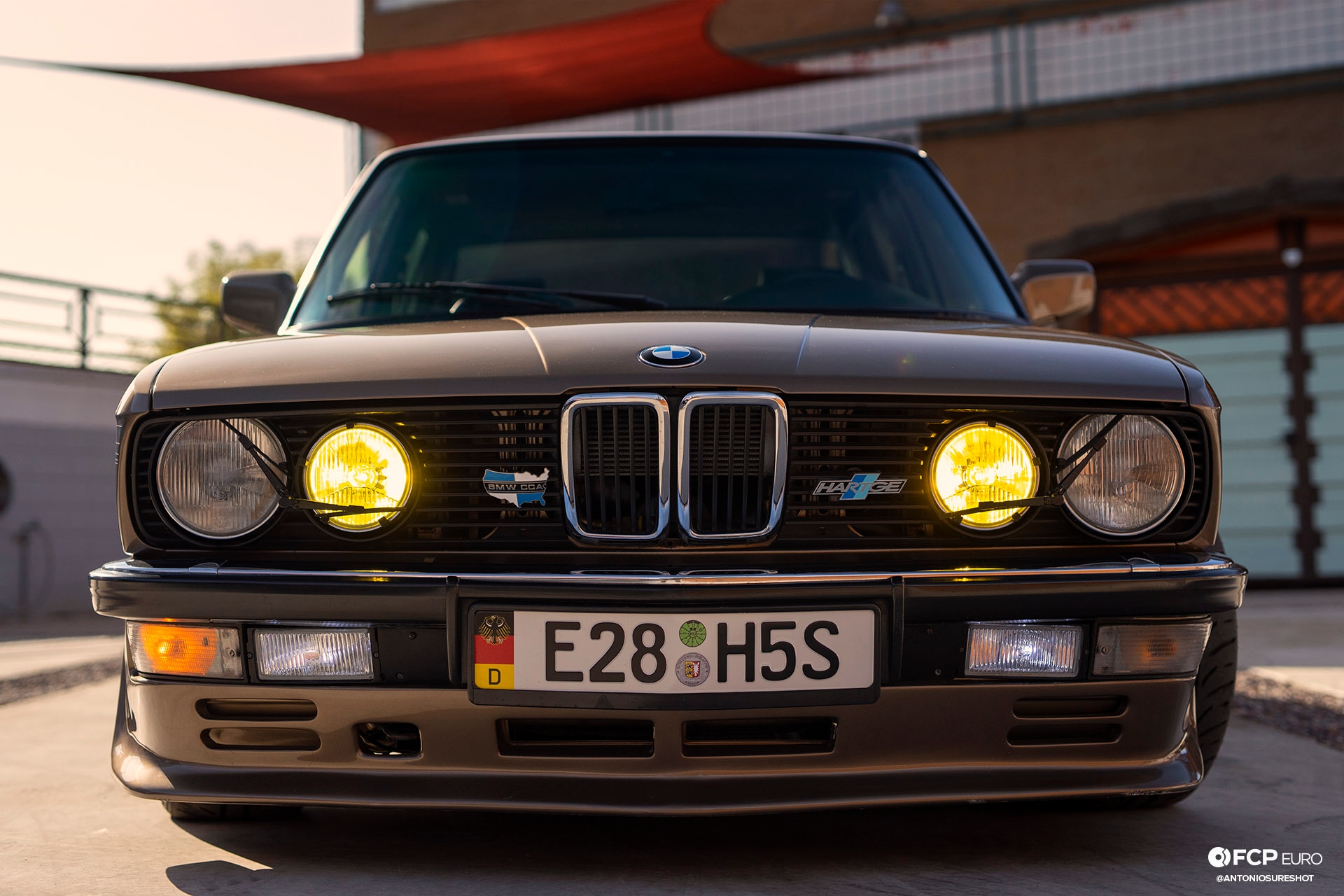
This H5S E28 was built in Europe in 1984 by BMW as a standard 535i before it was sent over to Beckingen, a municipality in the Merzig-Wadern district in Saarland, Germany where Hartge is based. After that, it was imported into the US by Performance Plus in Dania, Florida. Performance Plus was one of only two official importers of Hartge parts and cars in the United States. This means that this not only a true European collector car, but it’s also one of only five H5S E28s known to be brought to the United States. Since the time this H5S was imported, only 121,000 miles total were put on the odometer.
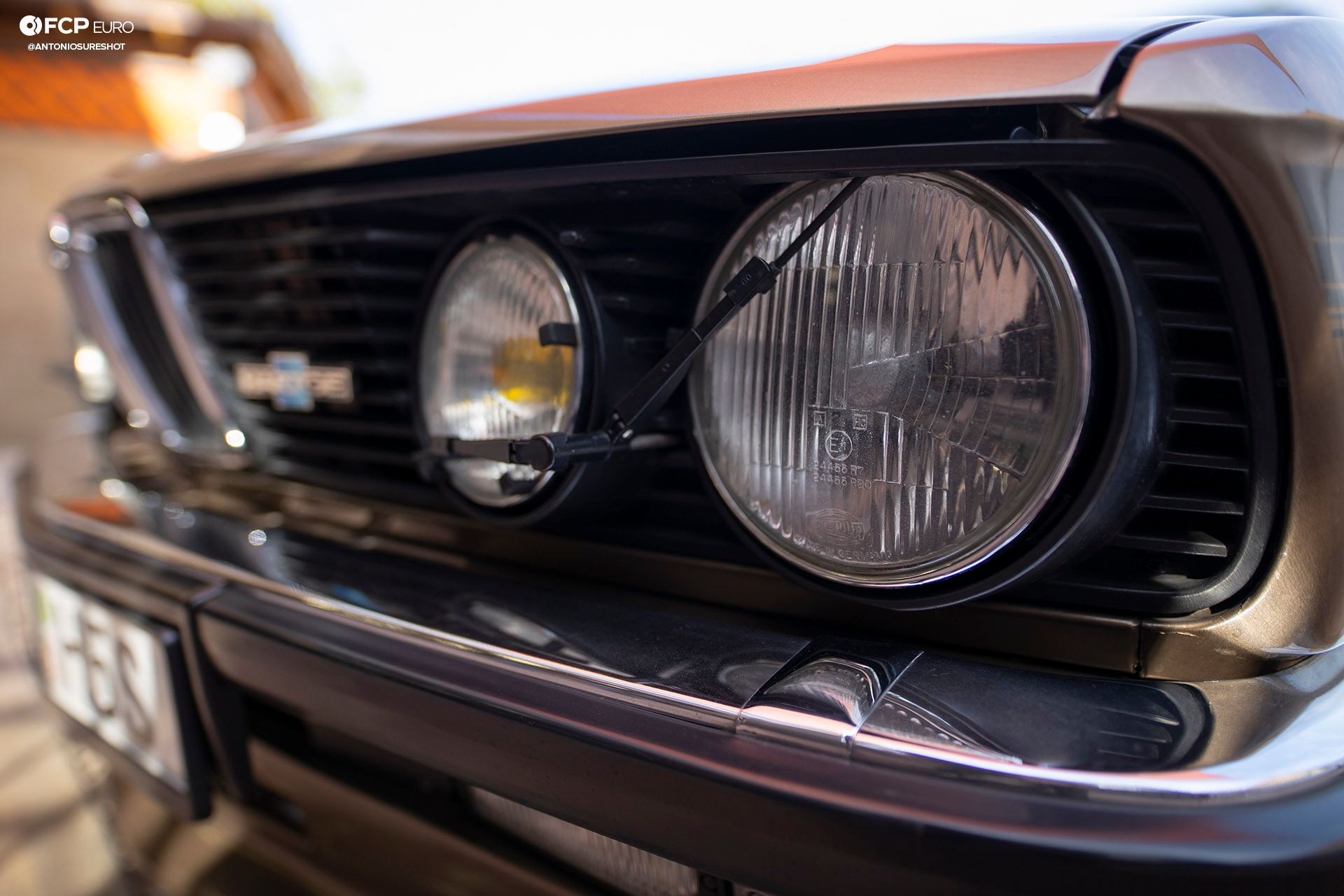
Despite its German birth, some additional European domestic market parts were added after this E28 landed on US shores. The Euro headlight wipers are very rare for the E28, as they were only found on European market E28s. The car didn't come with them when it was originally purchased, so they were added on during its restoration. Aside from looking cool, they wipe down the glass Hella headlight housings, with normal 4300k white bulbs for the low beams, and bright yellow bulbs inside the high beam housings to cut through fog.
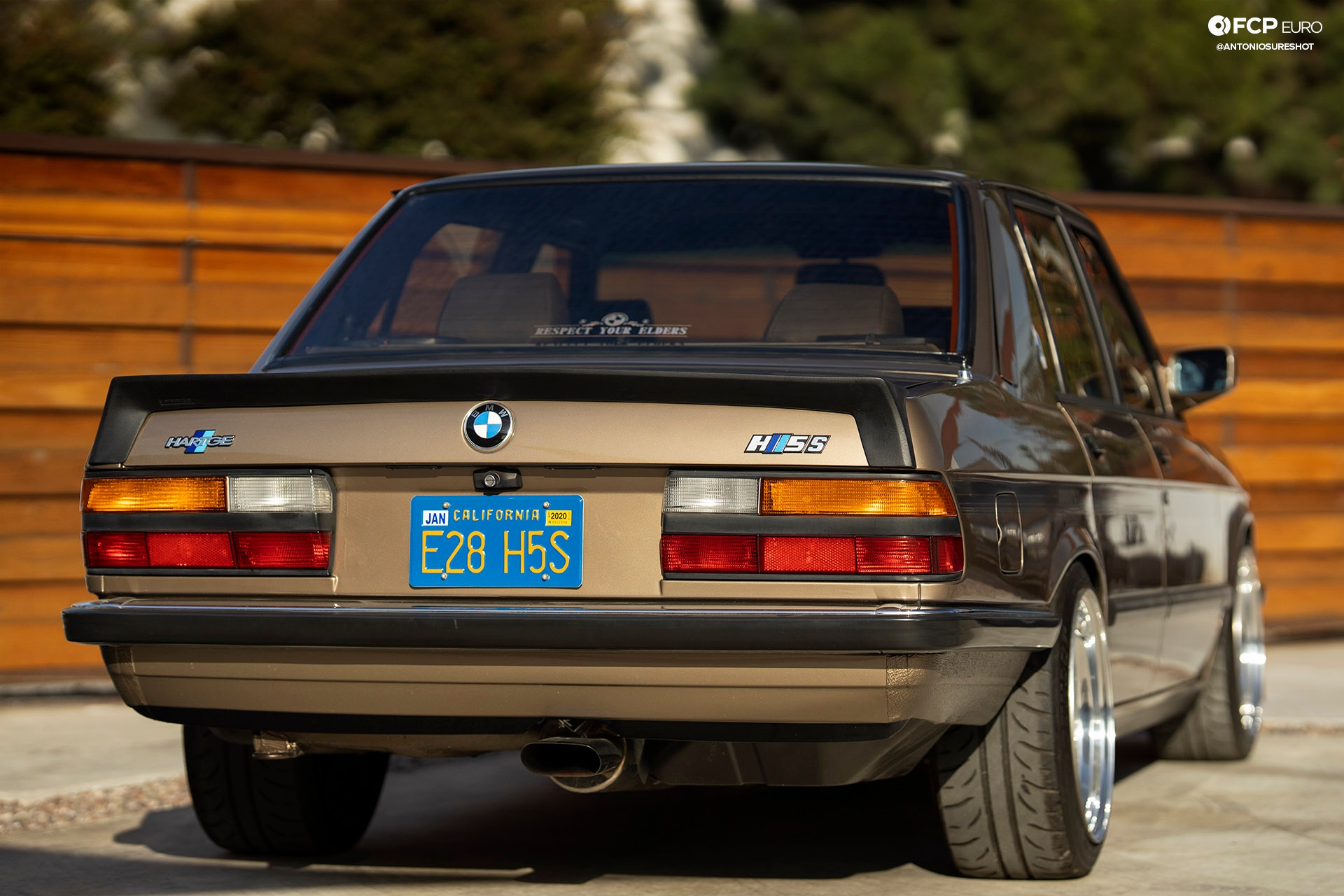
Prior to Ken purchasing this car for his collection, it was owned by E28 specialist, Ron Perry. While it was in Ron’s possession, this H5S underwent a full-color restoration. The chassis was stripped down and painted back to its original Bahama Beige before the slow progress to build it to how we see it now.
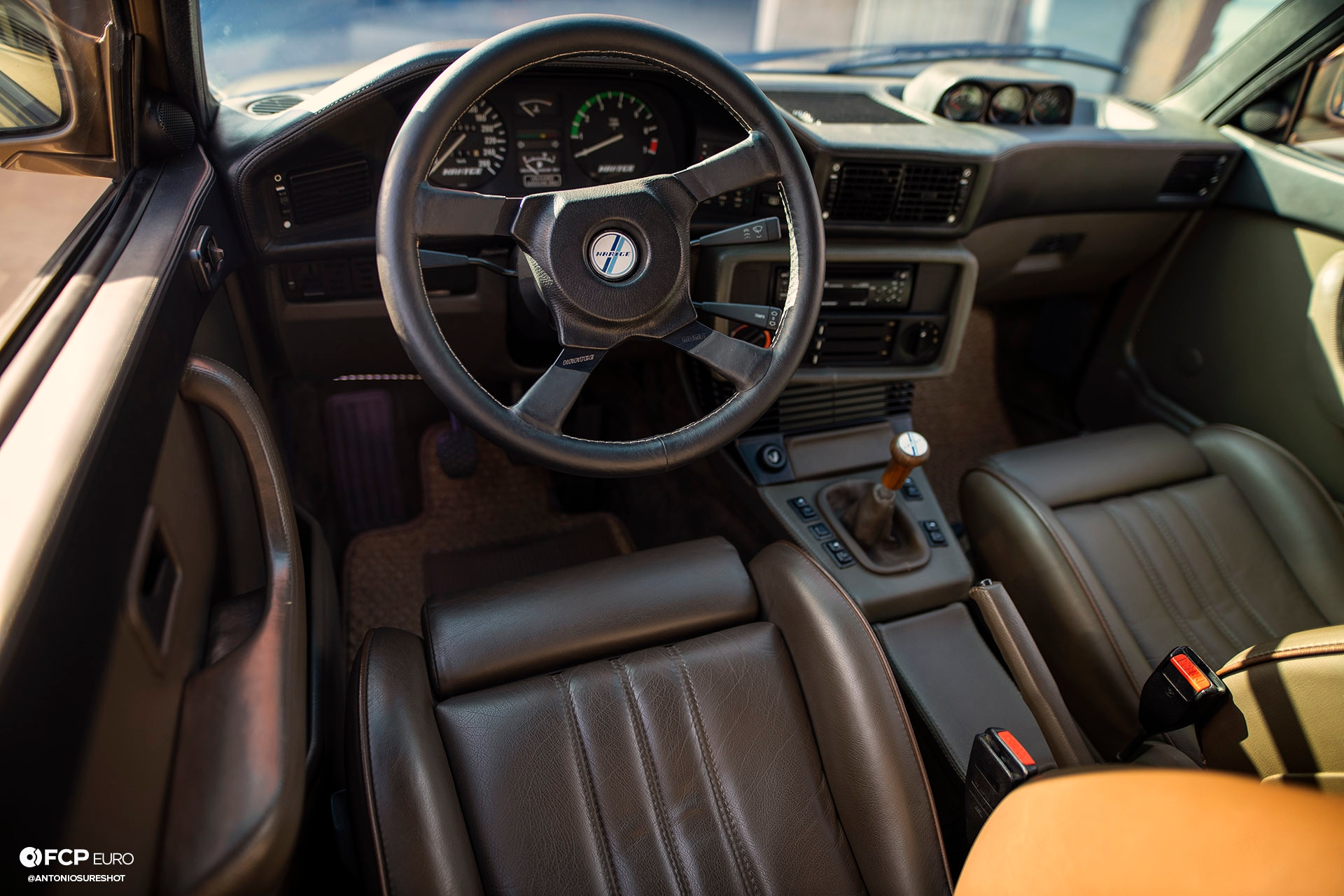
Leatherwork was done to the original interior, but these are all BMW or Hartge parts that came on the H5S when it was imported into the country. Some of the other parts for the occupants were optional, and added during the restoration.
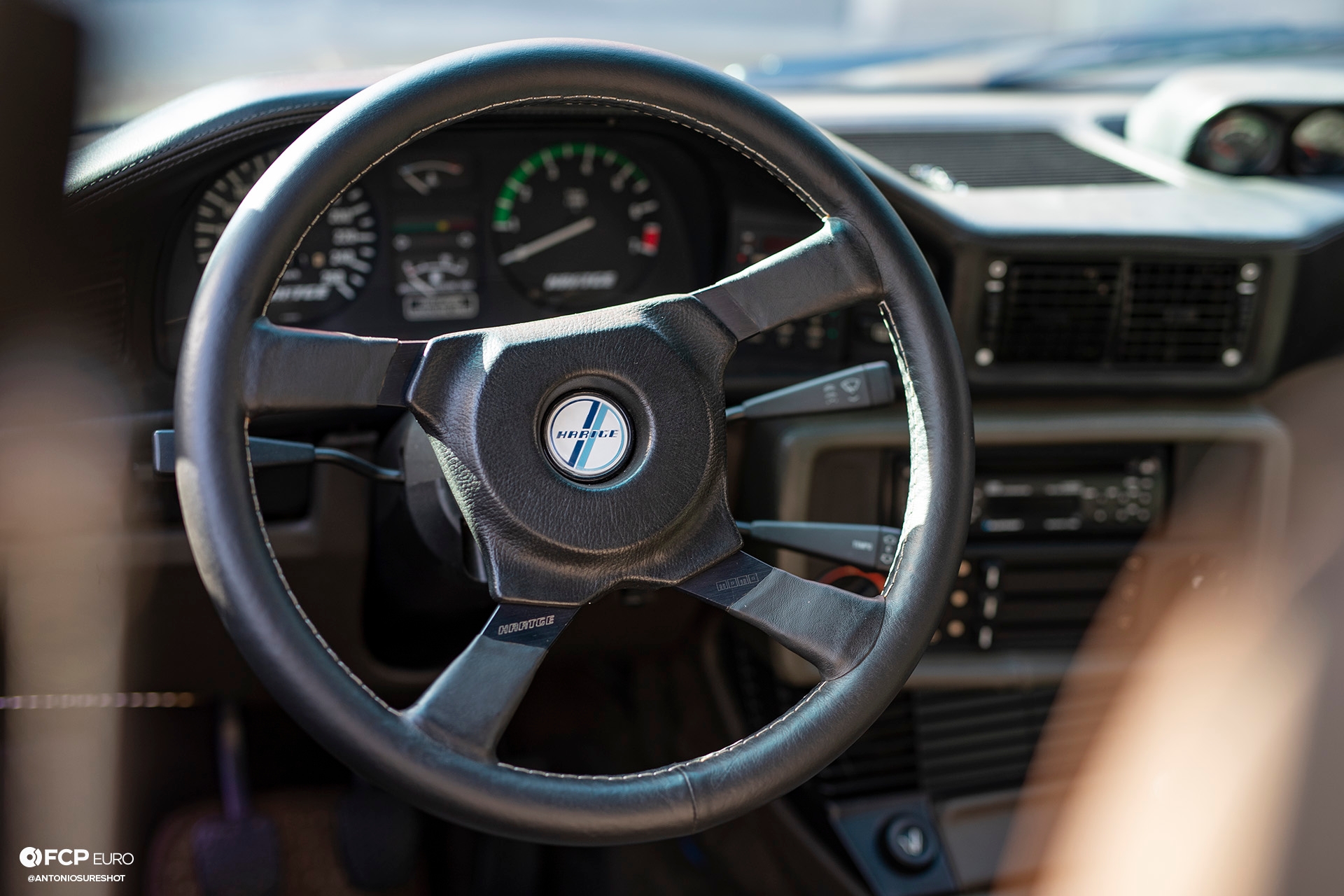
The steering wheel was built by Momo just for Hartge, and measures out to 350mm in diameter. This one has been reupholstered in new leather to match the dashboard.
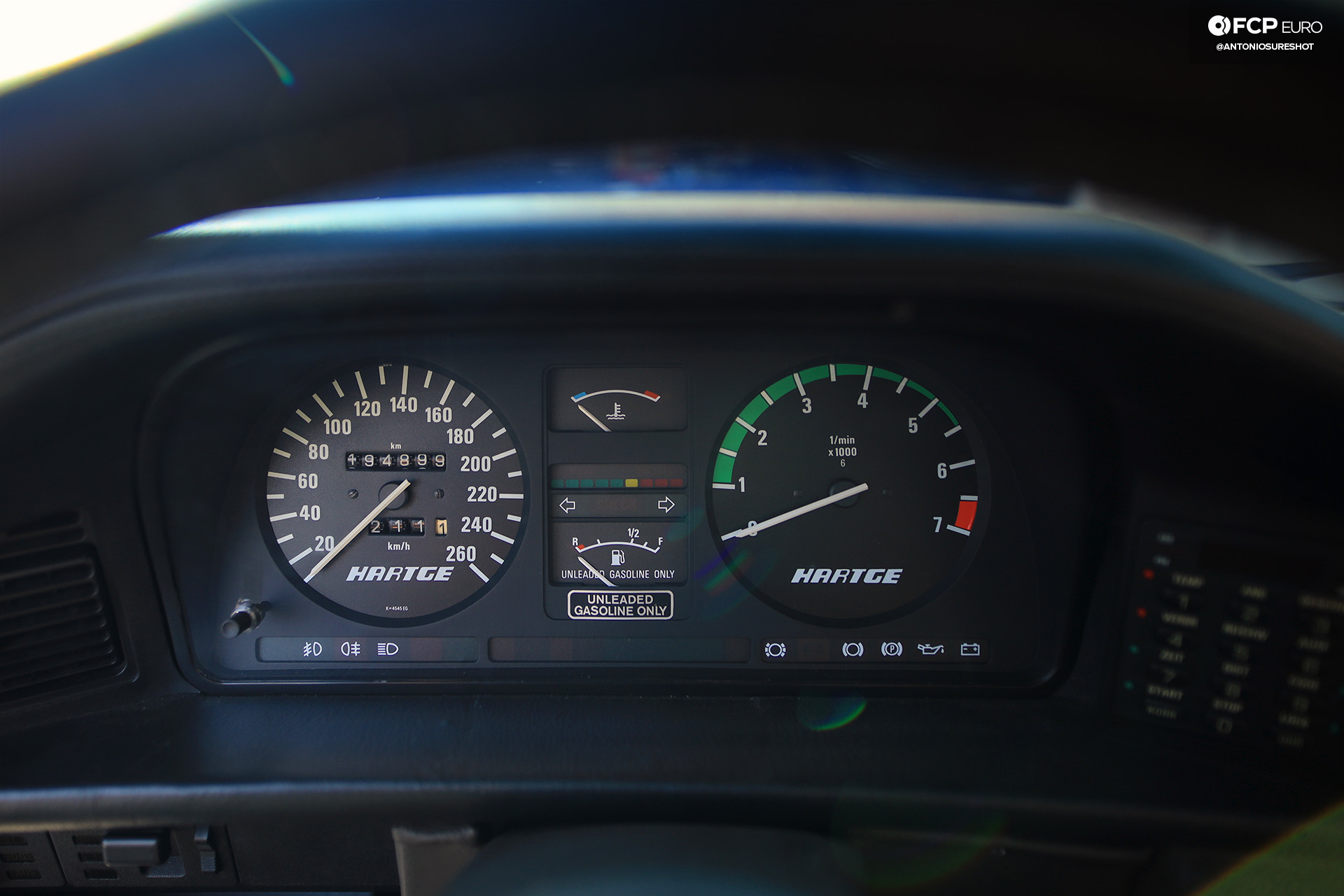
All Hartge cars received these branded gauges from the factory, but Ron had them rebuilt by North Hollywood Speedometer Company. The gauges are German, which is why you see the speedometer in kilometers per hour rather than miles per hour. You can also see that the car has only 194,000 kilometers on the clock.
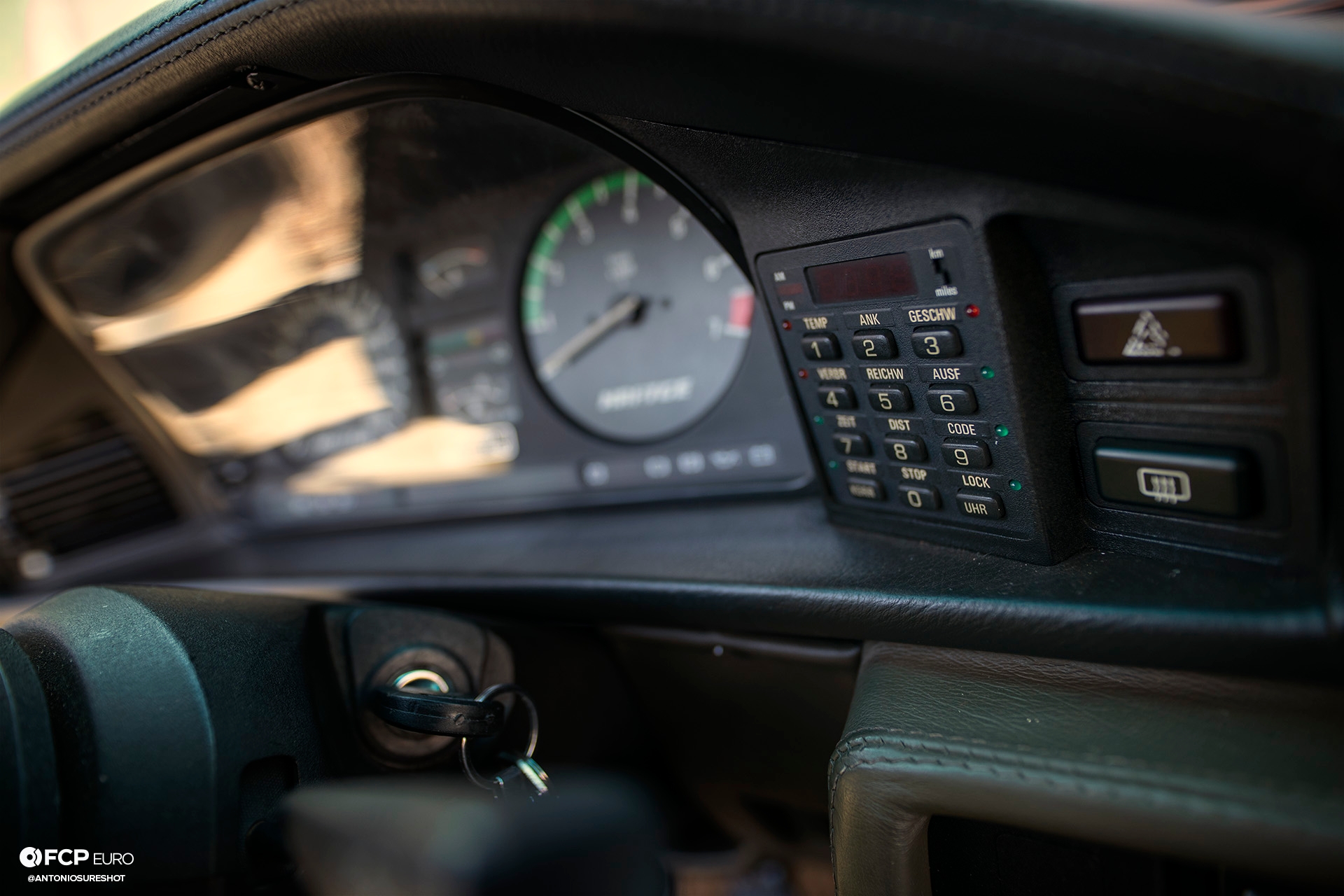
However, having German gauges does make for challenging reading when using something like the original trip computer in the dash.
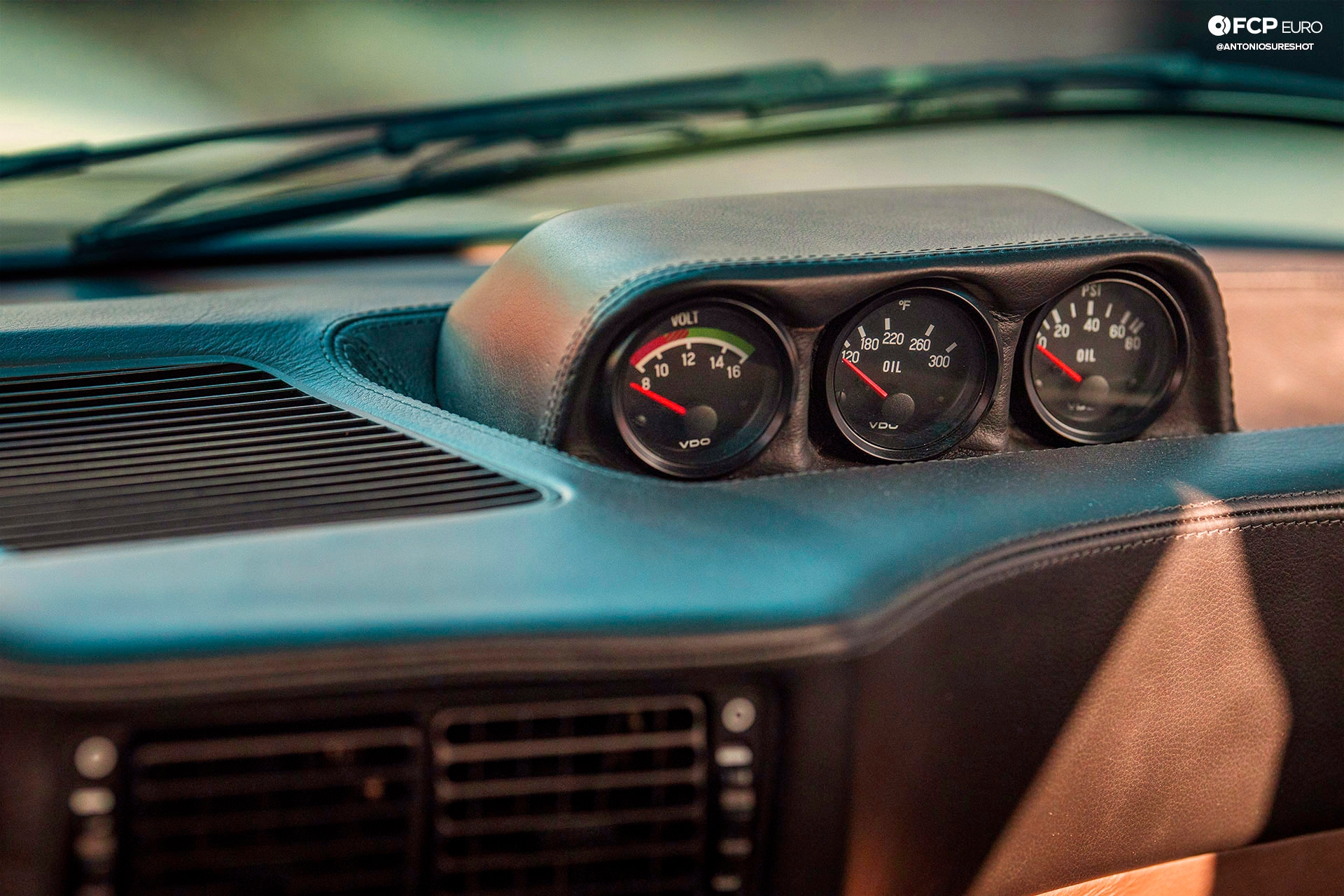
The H5S had the option of a three-pod gauge cluster that mounted to the dash and hinted at the racing-inspired legacy of Herbert Hartge. When the dash was reupholstered in leather, he made sure this piece was included. The original gauges have been replaced by VDO parts and the oil temperature and pressure gauges read in Imperial rather than metric.
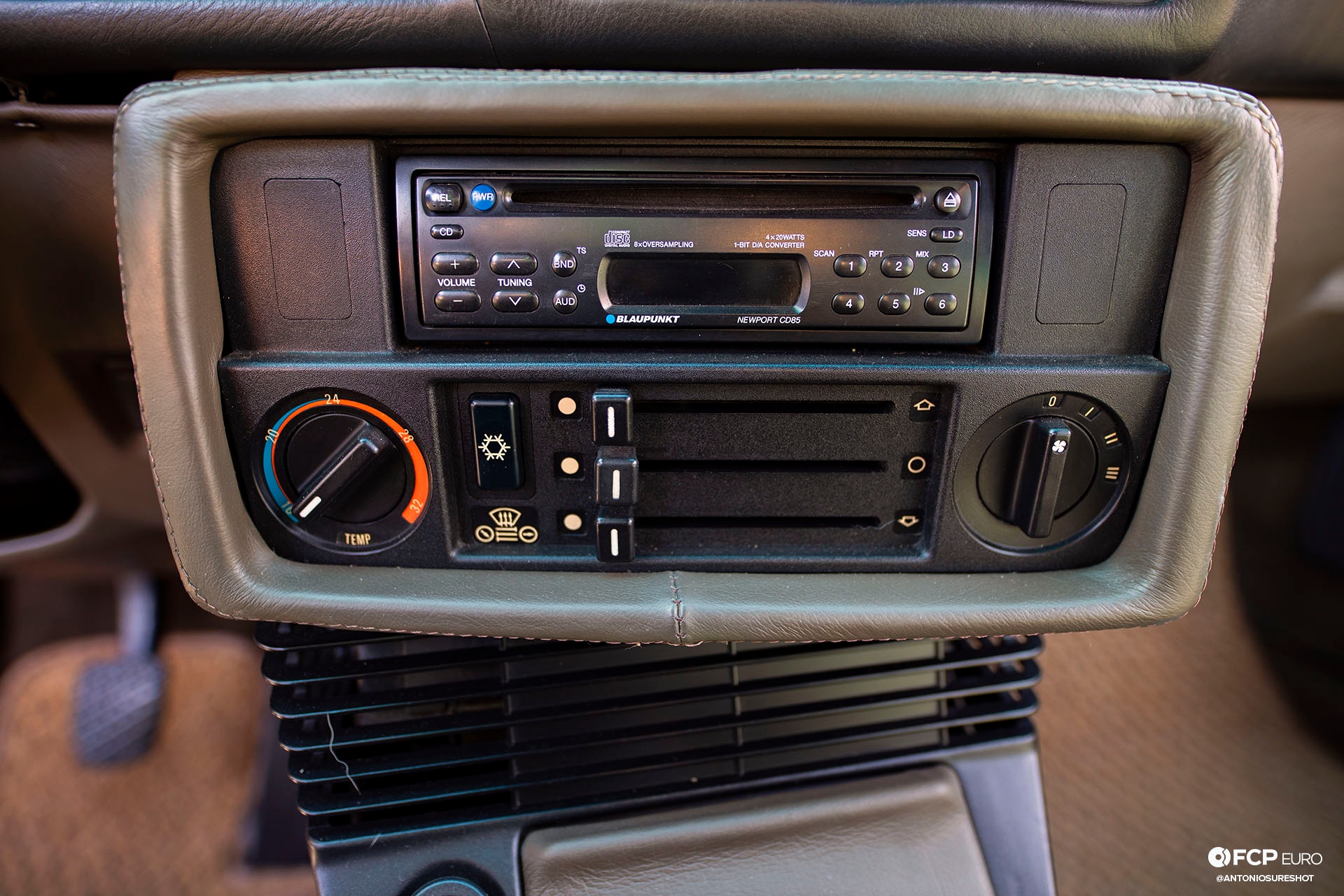
Another new addition during the E28’s renovation was the Blaupunkt Newport CD85 head unit. It replaced the original BMW tape deck unit with a slightly more modern CD system. Ken does have plans to replace this with another high end deck eventually, but for now, he can continue to listen to his period-correct CDs through this Blaupunkt.
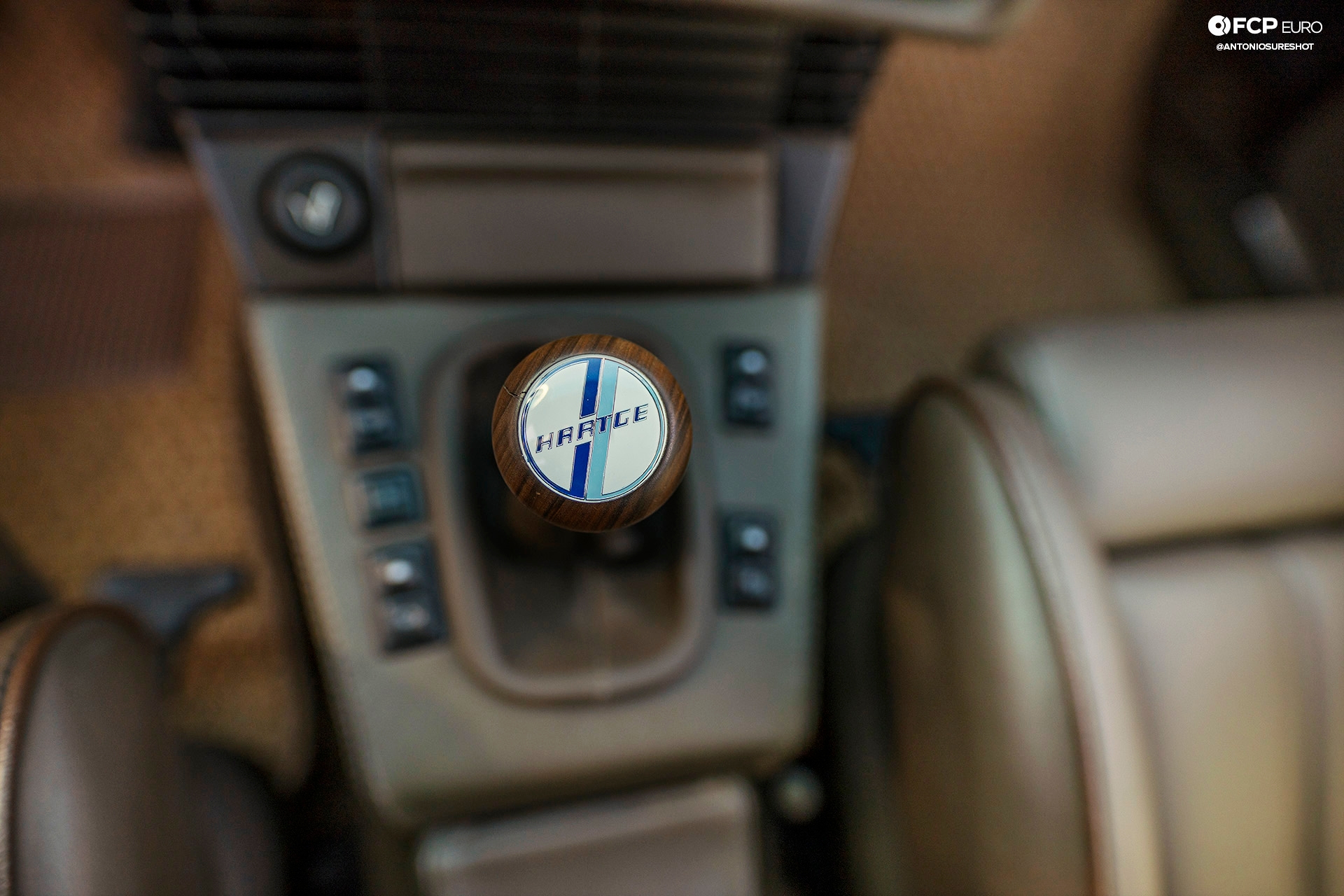
Of course, you can’t have a true Hartge vehicle without their vintage shift knob mounted to the stock transmission shifter stalk.
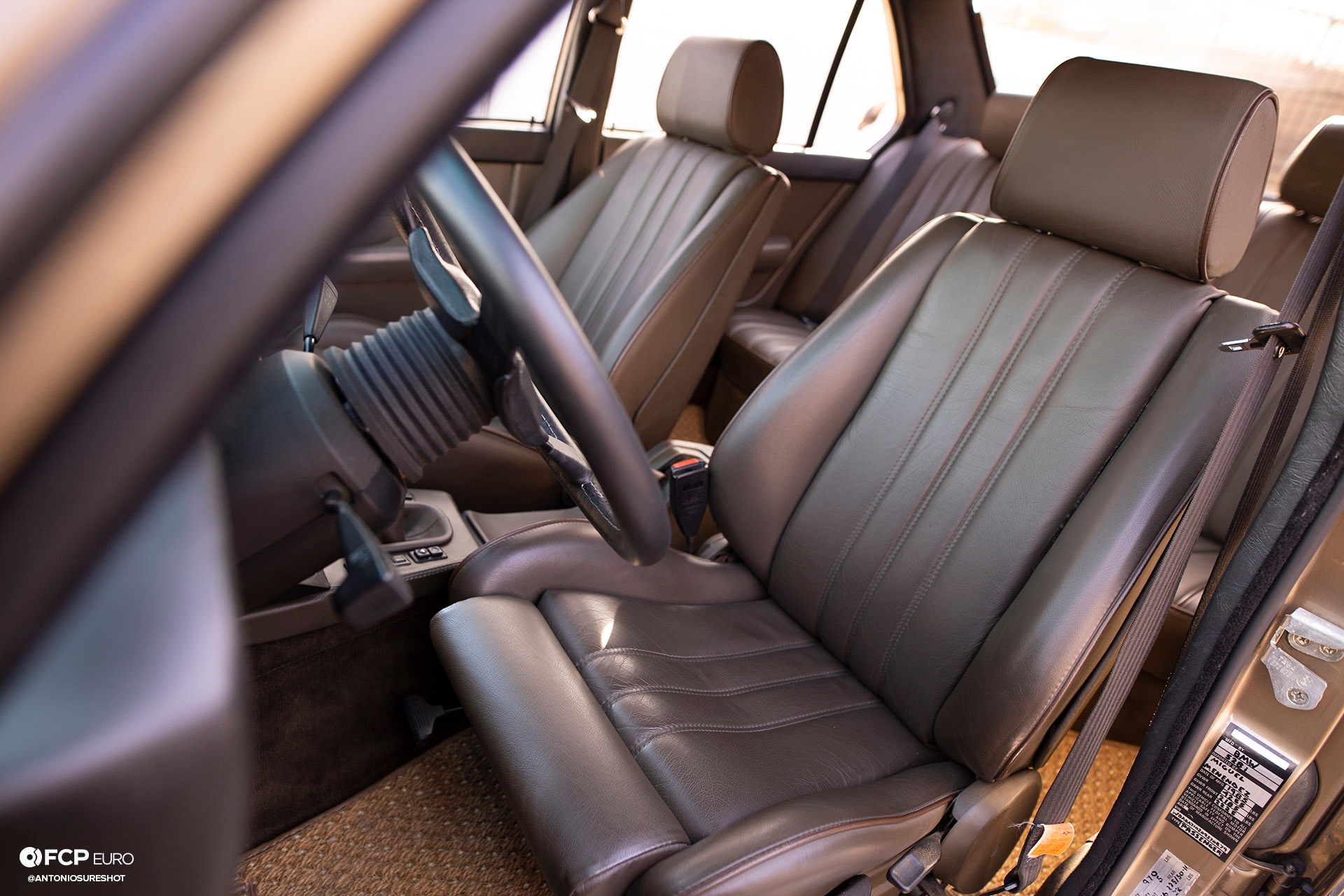
The leather on the seats is all new, and have been the biggest departure from the original Hartge build. Even with the newer upholstery, it all still feels factory.
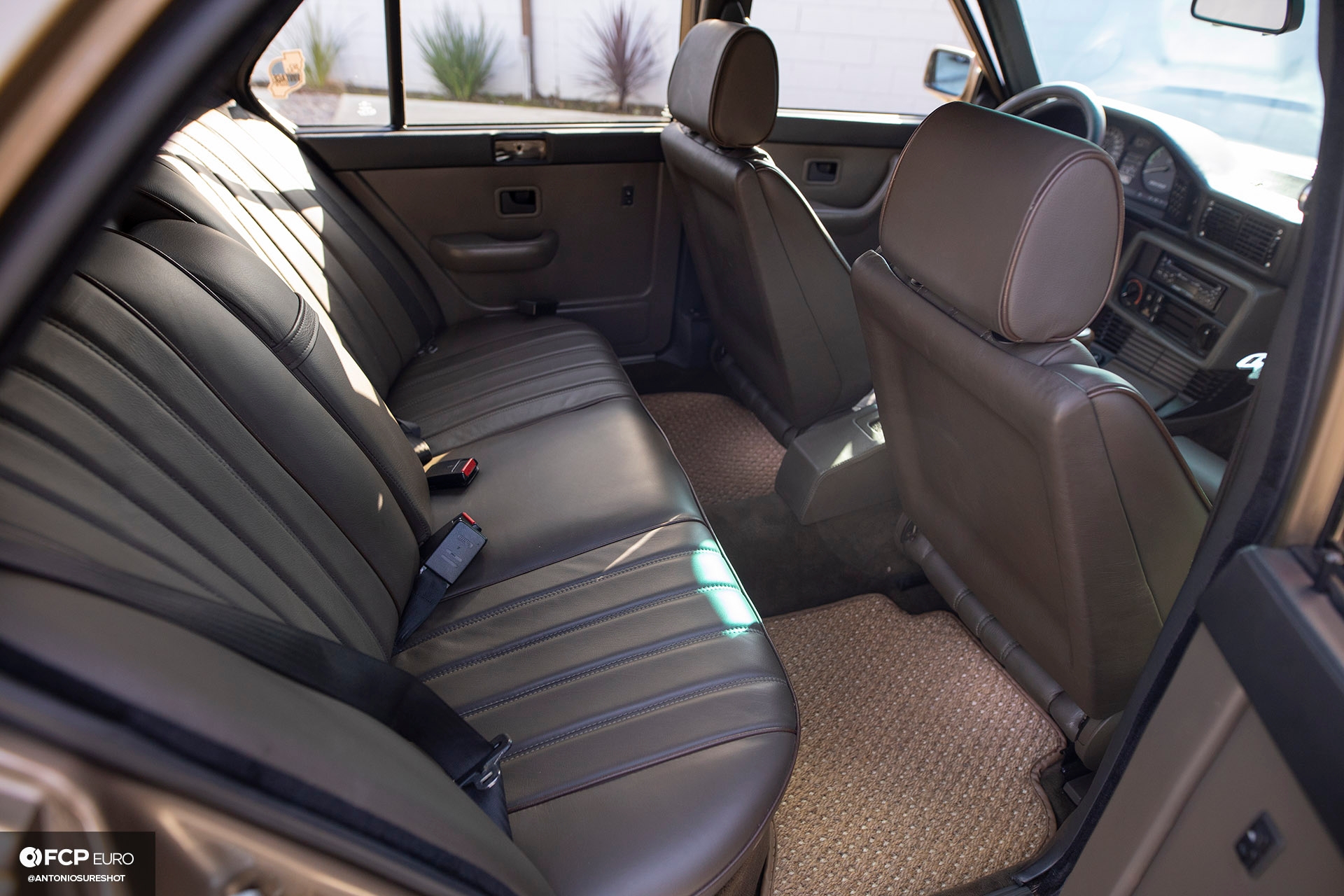
This factory feel is achieved by reusing the original parts, and also recoloring the leather on the door cards to match the rest of the interior color scheme. A set of custom-made Coco Mats floor mats were also added as an upscale contrast to the rest of the interior design. Still, it wouldn’t be hard to imagine Hartge doing all of this themselves.
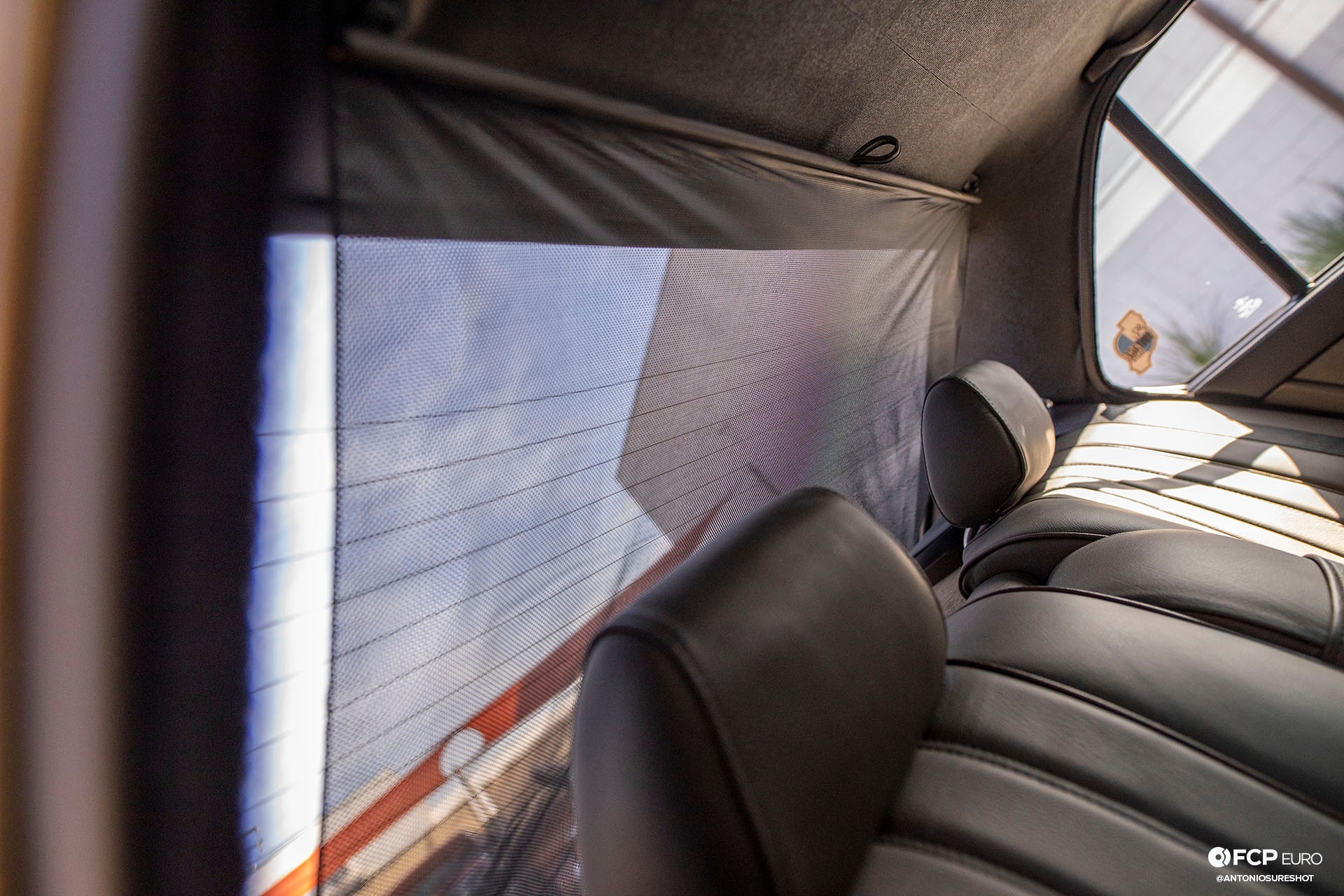
Another nice feature on Ken's H5S is the manual rear sunshade. This super rare part works wonders in the Southern California sun and not only helps reduce interior temperatures but also protects all that new cowhide.
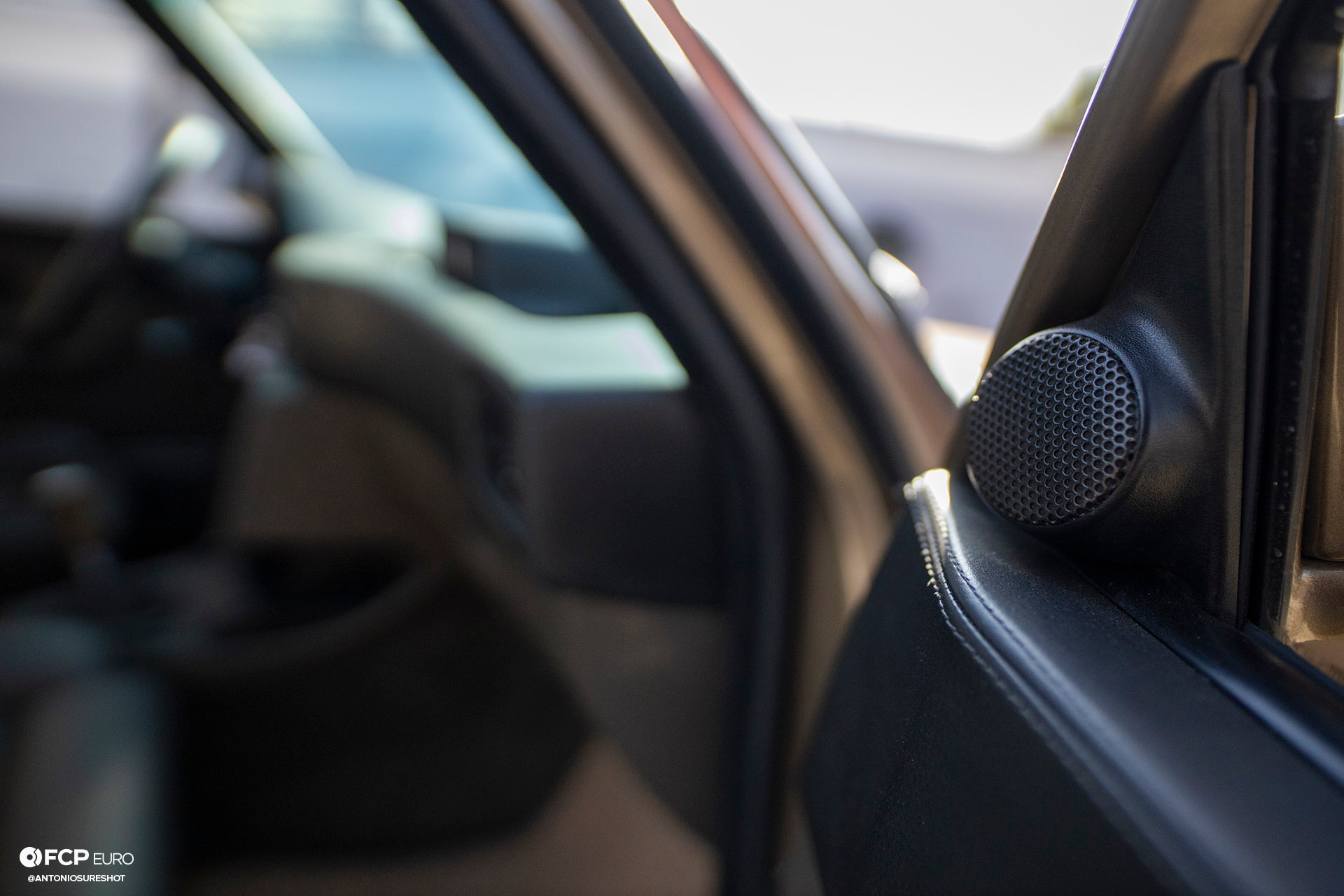
When the new Blaupunkt stereo was installed, so was a set of high end separates. This is a term used by the car audio magazines of old to describe higher end speaker sets that separate the mid-range woofer (usually mounted low in the door) and the tweeters for high range vocals, which are shown here with their own housing behind the door mirror.

On the rear parcel shelf, just above that sunshade retractor, are a pair of Focal 6x9 speakers that replace the original BMW parts. These audio parts will most likely remain once Ken changes out the head unit, especially since they all perform far better than the original 1980s parts that once lived here.
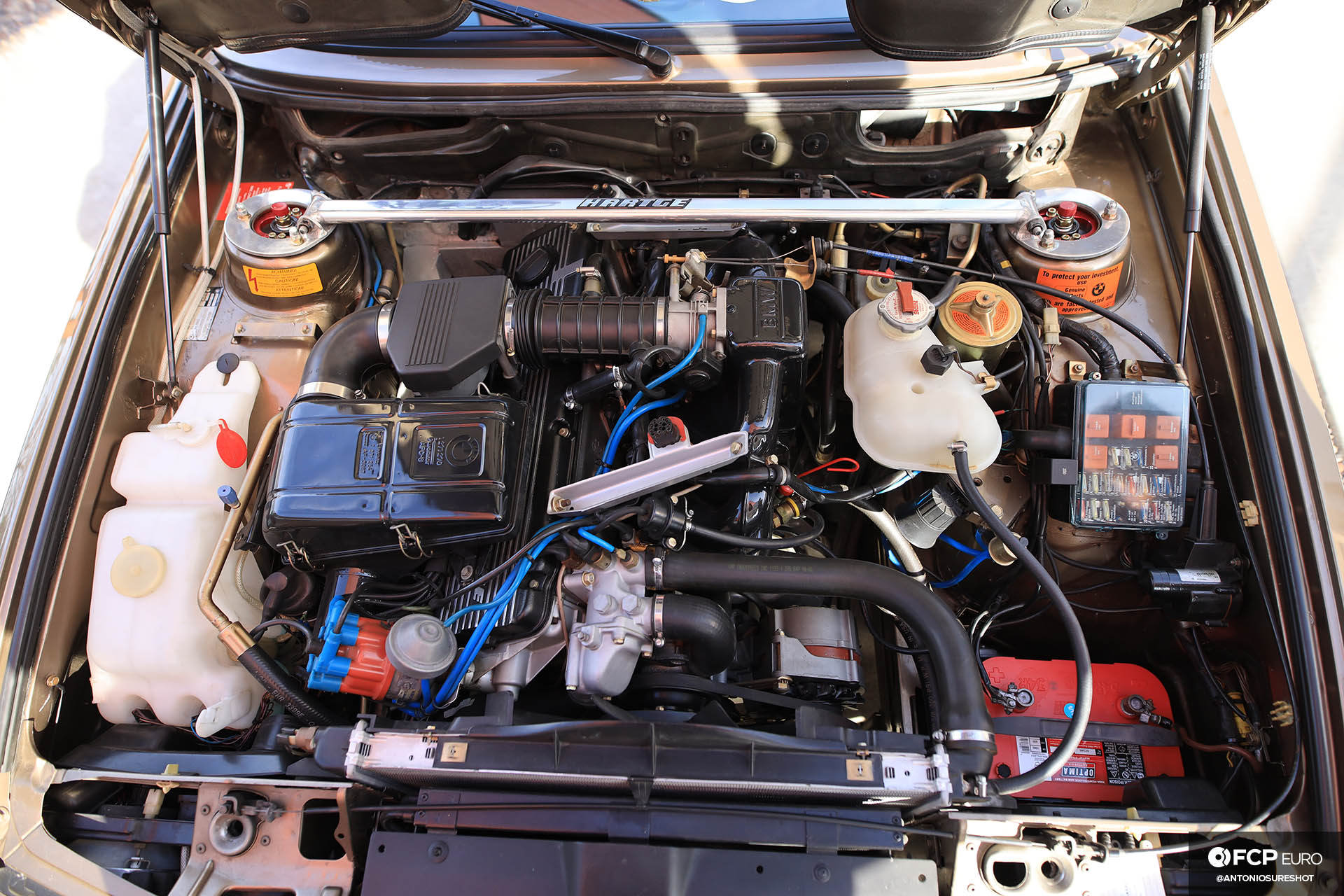
The main selling point of a Hartge-built car was its performance. Herbert Hartge also felt that turbocharged performance was something that only the OEMs should handle, which is why all their cars engines were naturally aspirated. Despite that, the E28 H5S was equal or even superior to the E28 M5 in execution. This starts with removing the original engine and using the European BMW M30 “L-block” bored out to 3.4-liters.
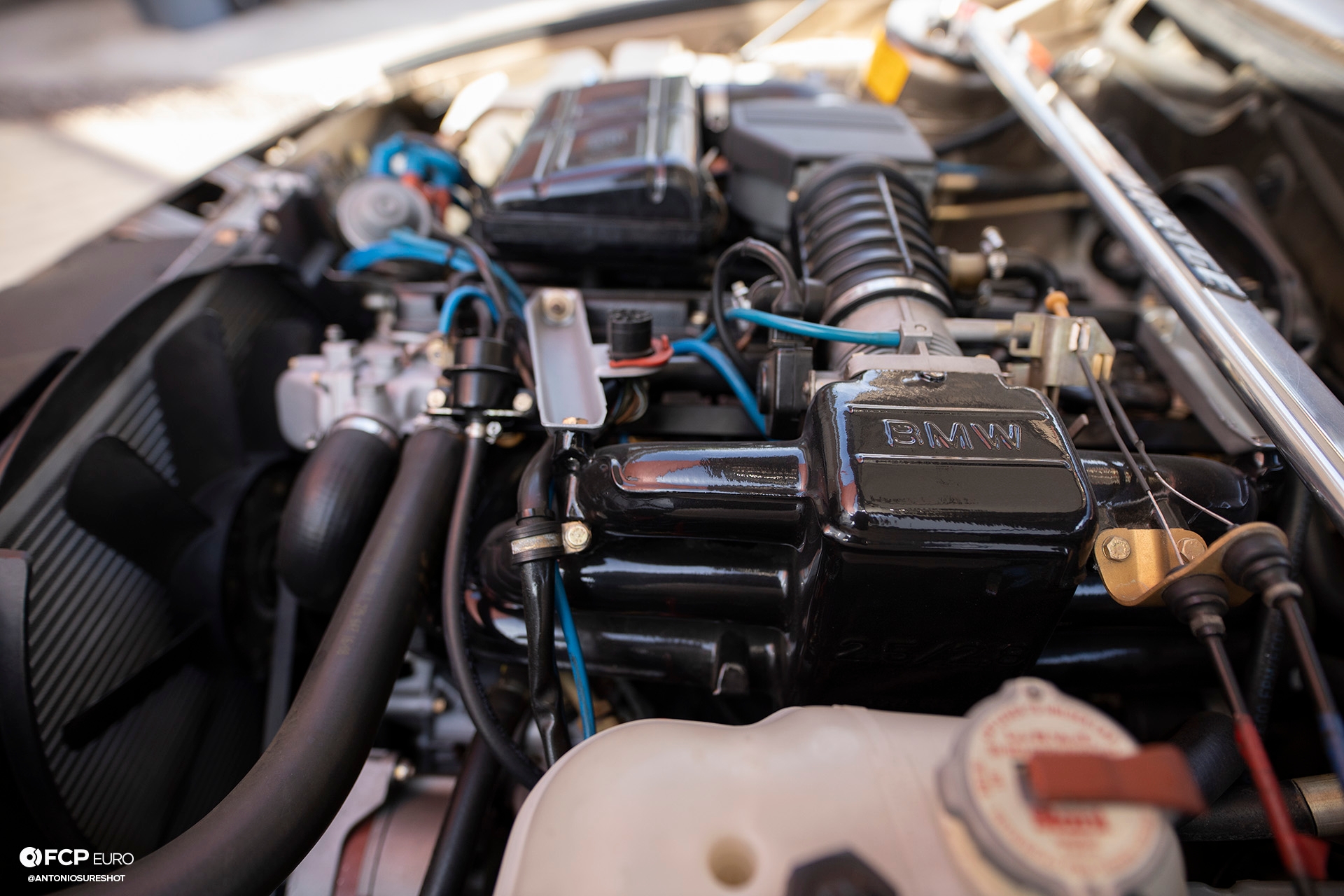
Even with a displacement of that size, Hartge elected to use the intake and throttle body from the 2.5/2.8-liter M30. The strategy here is to shift the torque curve lower in its rpm range. Since there is less natural velocity in the intake at lower rpm, a smaller intake port helps increase that velocity and pulls in more air by speed. Once you reach a higher rpm range–typically above 3500rpm–you then run into an air mass issue and that is where a larger intake port and throttle body can help.
This is also why you see “dual runner” intakes from the OEMs. One runner is a smaller diameter and longer for increasing air velocity at low rpm and the other is shorter and larger in diameter for allowing more air mass at high rpm.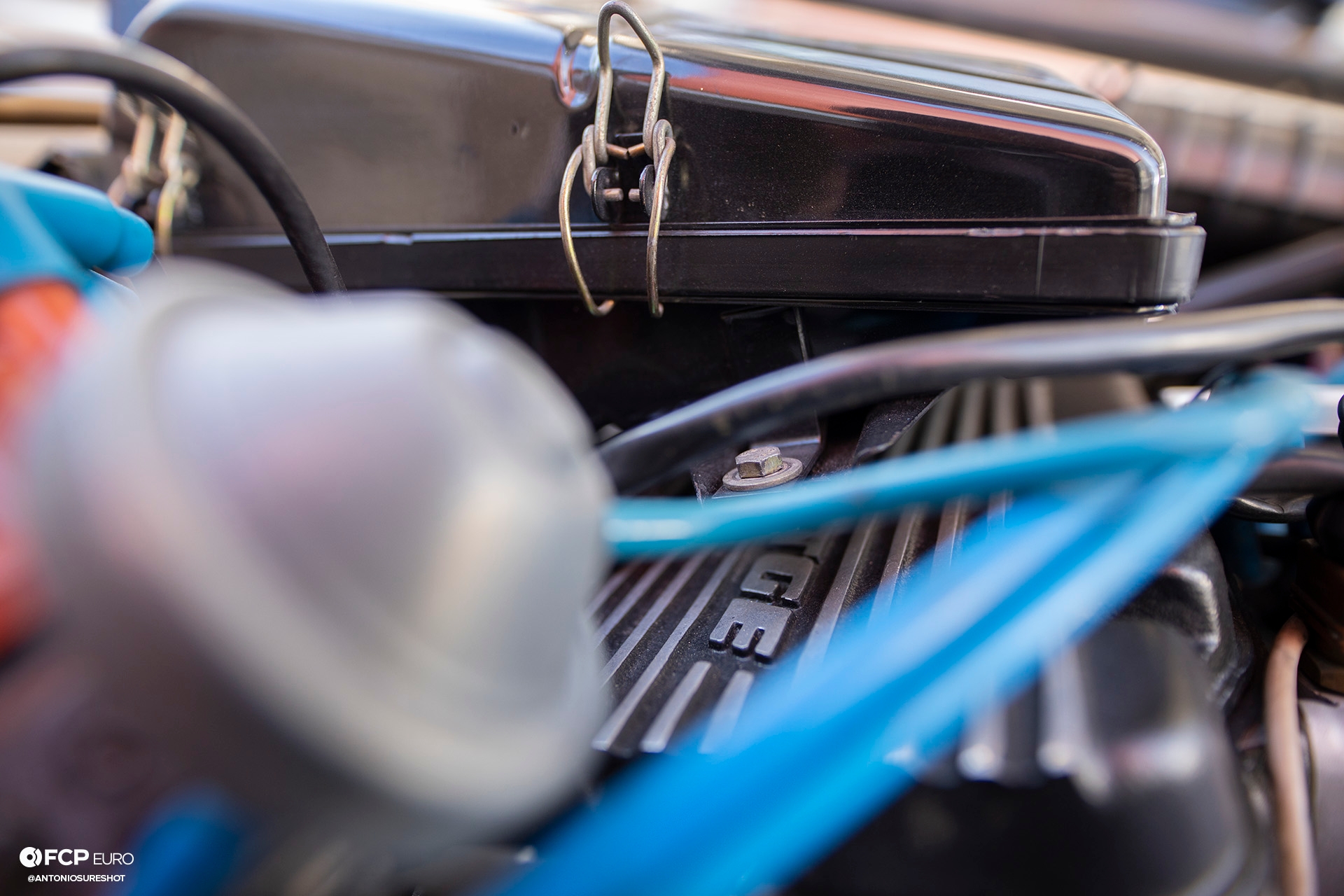
The intake manifold is also ported and polished to match the Hartge-modified head. Inside that head and under that original Hartge cam cover is a 282-degree camshaft that works for the RPM range of the intake manifold and engine displacement. Other work Hartge did to make the engine sing was to increase the compression ratio to 10:1, the installation of a tubular exhaust manifold, and the addition of a free-flowing exhaust system.
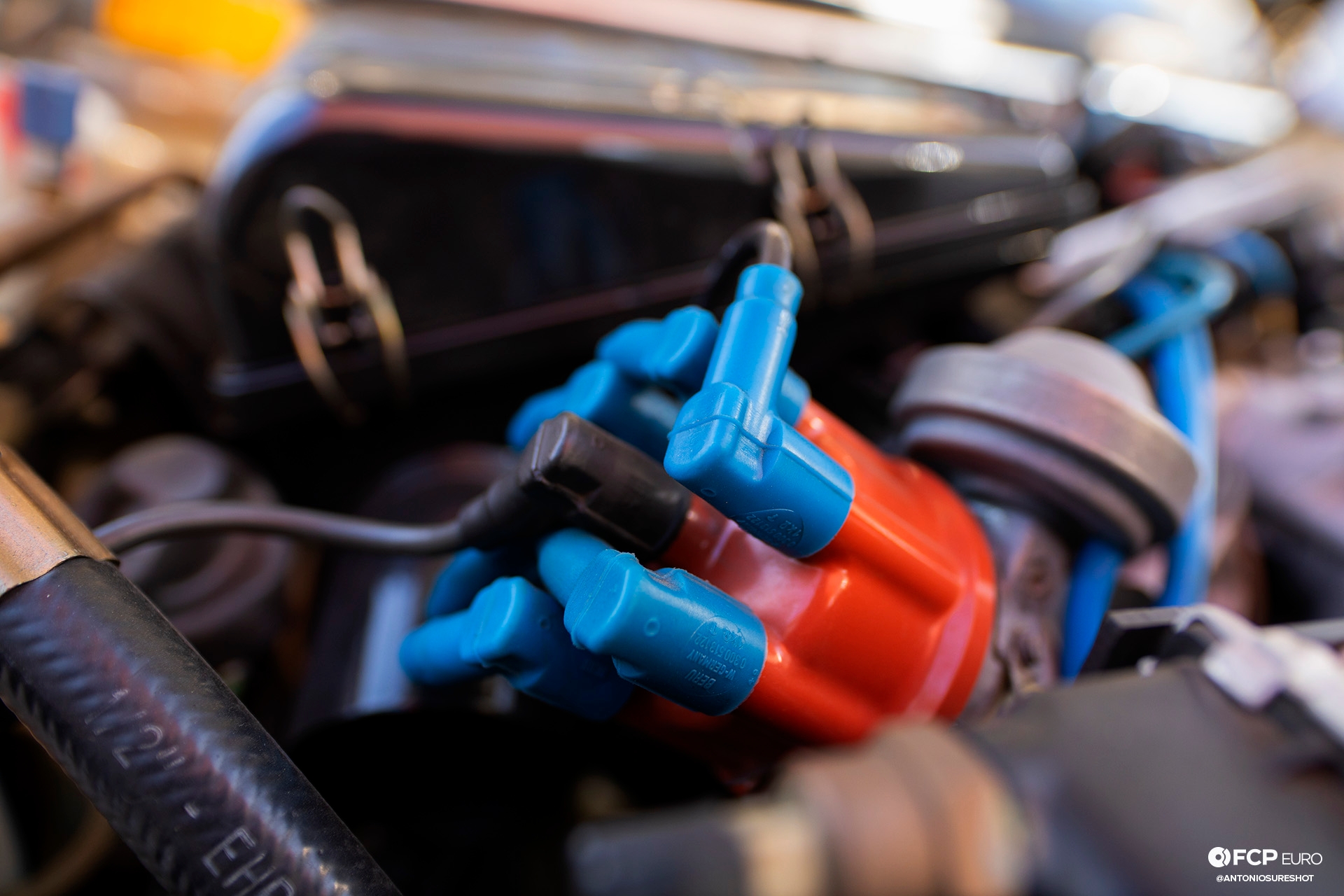
Another separation from the smaller M30 in the E28 is the use of a vacuum-advance distributor and its Beru spark plug wires. The vacuum-advance distributor replaces the ignition module distributor with an entirely mechanical unit, once again calling back to Hartge’s racing experience. This type of distributor uses contact breaker points attached to a contact breaker plate. It also uses weights to advance the ignition timing mechanically via centrifugal force from the distributor shaft. How much force needed to pull those weights out is adjusted by springs and sometimes by also adding or removing mass from the advance weights. This movement increases the tension on the contact breaker spring and forces the breaker to open sooner.
The vacuum advance, however, will physically move the contact breaker plate to a more advanced position. It does this by pushing the plate when there is no vacuum (engine is at a higher rpm) and pulling the plate when there is vacuum (engine is at a lower rpm). Race cars usually don’t use the vacuum advance since they have a known rpm range in known conditions to operate in. A street-driven car needs the vacuum advance since these cars can see a wide range of throttle positions, rpm, and atmospheric conditions in a single drive as well as fuel economy and driving comfort to be concerned about.
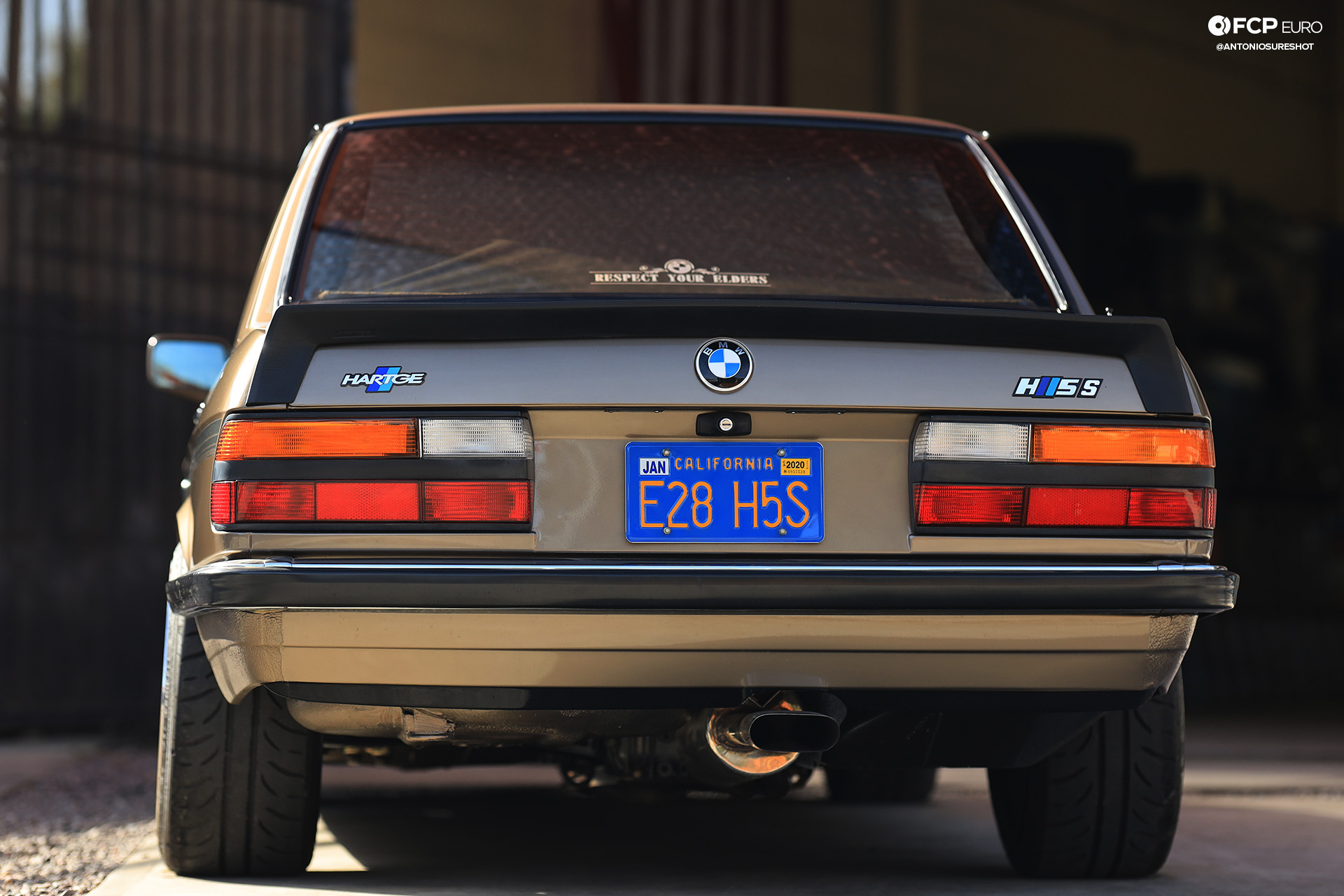
Once that distributor ignites the air and fuel mixture in this H5S, it’s sent out an Ireland Engineering stainless-steel exhaust system that uses high-flow catalytic converters, a stainless end canister, and the original Hartge exhaust tip.
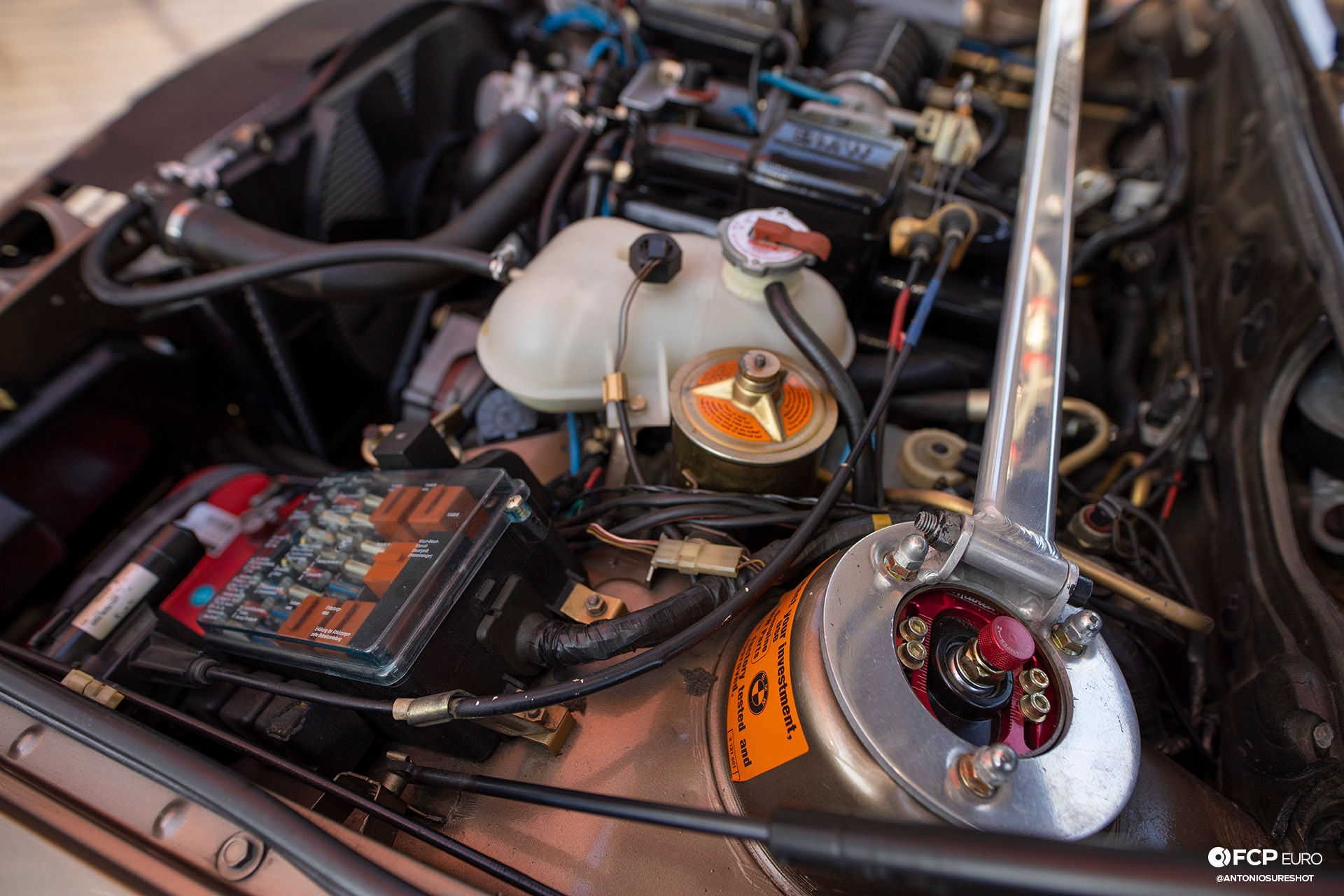
The original Hartge struts and shocks have been replaced by a set of CATuned coilovers. The springs are the same rate as the original Hartge parts, the sway bars are original, and were powder coated back to their original color when the car was restored. At the time, the H5S was good for 0.79-g around a 282-feet diameter skidpad, according to Car and Driver in 1985. With the newfound adjustments from the CATuned suspension, we imagine that number might be even higher now.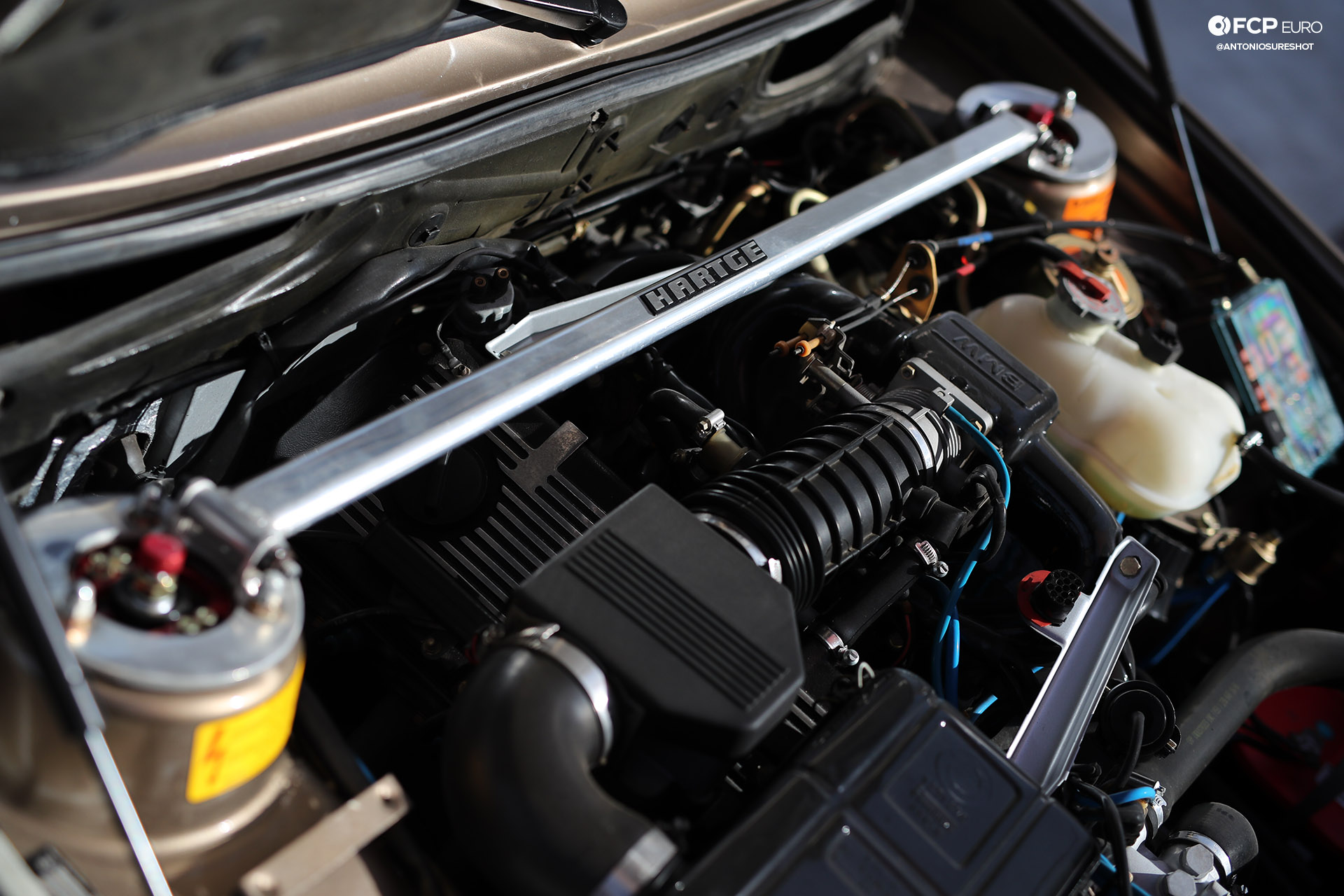
Spanning across each tower is the original Hartge strut tower bar, which, just like pretty much everything else in the car, is a rare accessory.
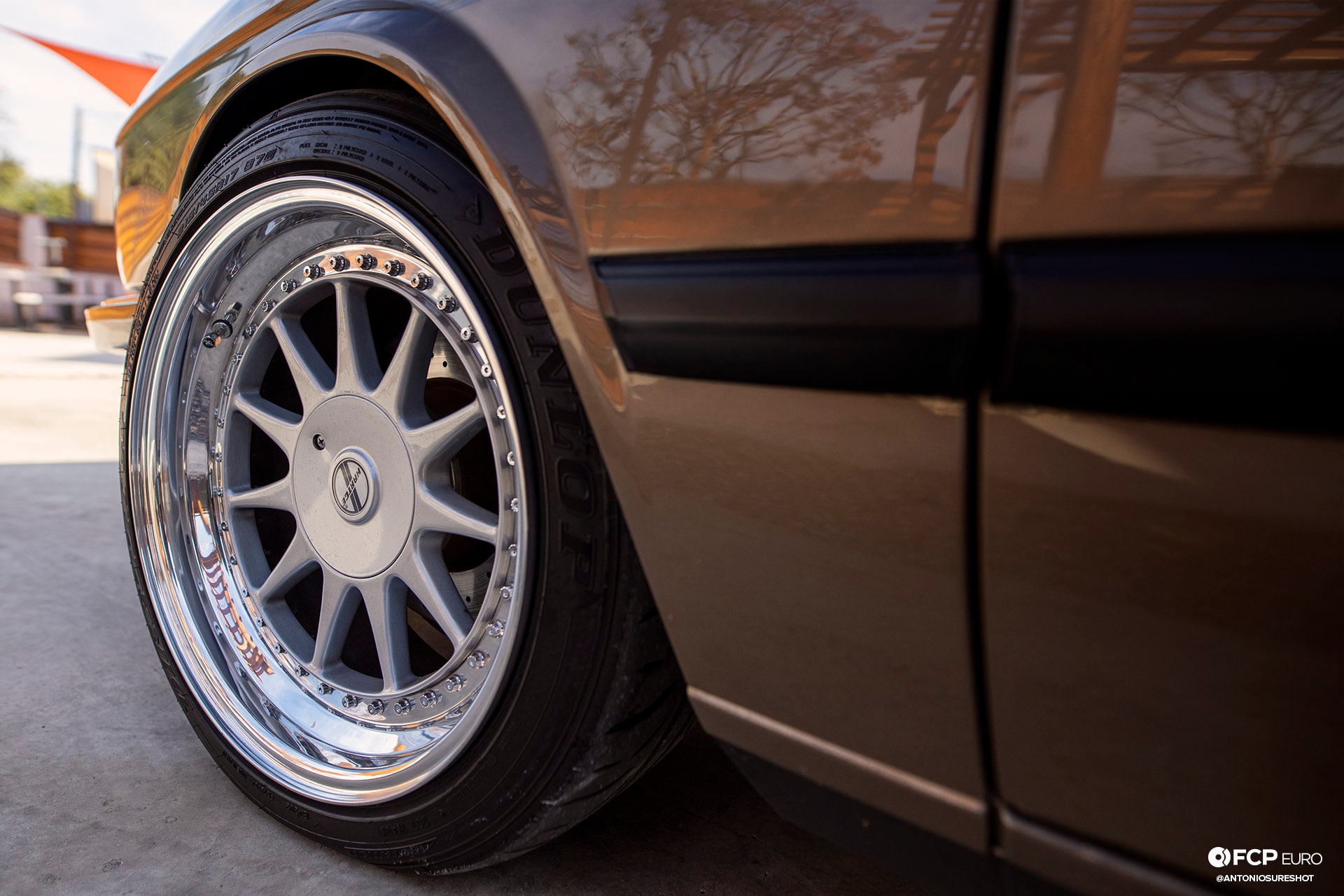
The Hartge three-piece wheels are not original to this car since it came with a set of single-piece and staggered 16-inch Hartge wheels. These three-piece wheels, made by OZ Racing, measure out to 17x8.5 in the front and 17x9.5 in the rear. Dunlop Direzza ZIII tires also replace the original Pirelli P7 tires, with the new Dunlops measuring out to 215/45R17 in the front and 235/40R17 in the rear.
The next non-Hartge addition was a pair of drilled front rotors and stainless-steel brake lines for all the calipers. While these weren’t original parts, they are in the spirit of what Hartge would have done in the 1980s, if they could have done it.
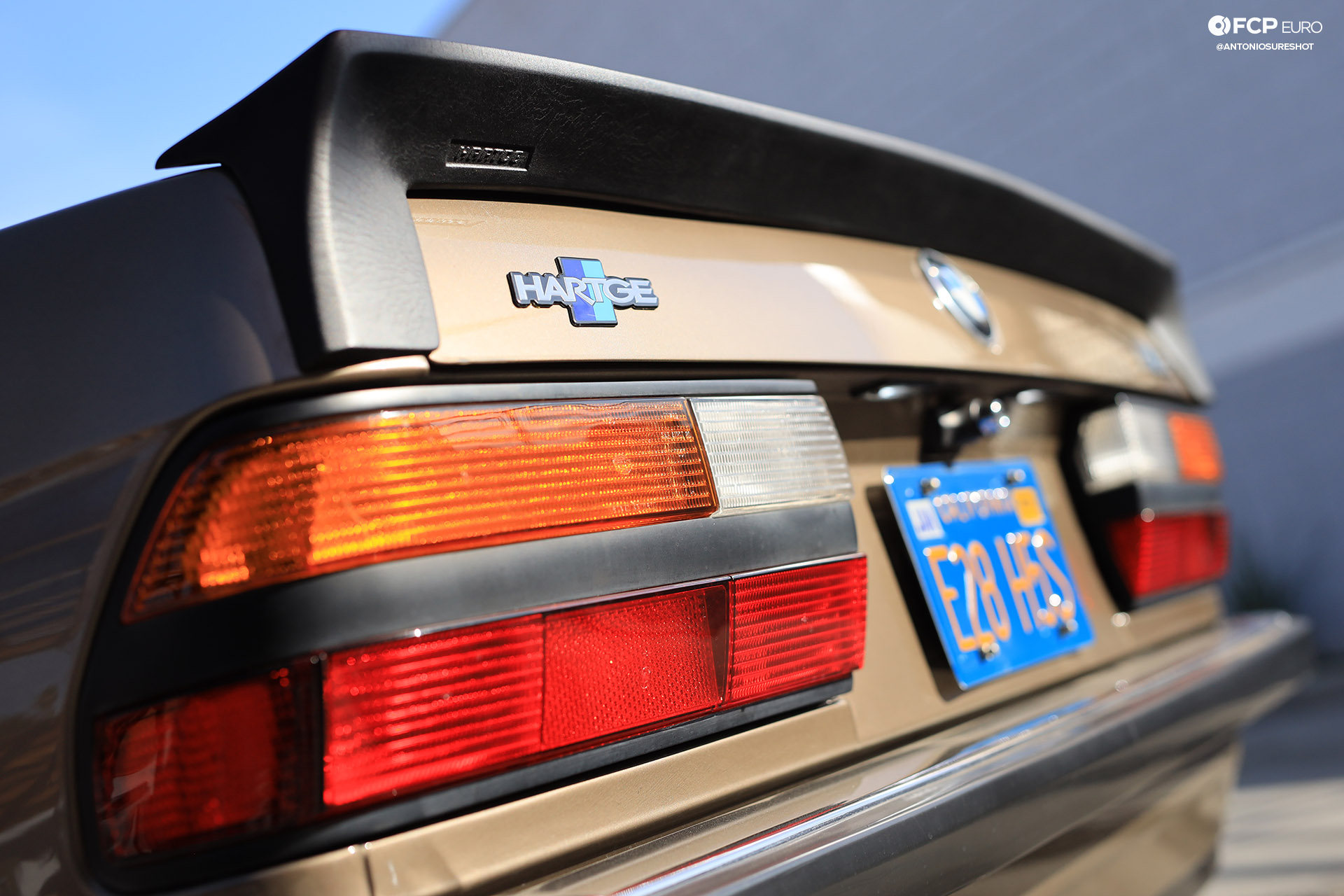
Originally, this H5S came with a large wing rather than the Hartge rubber spoiler on it now. This did require the use of a US-spec M5 trunk lid but that came with the tool kit, too. Those tools make for a nice addition for this car.
A departure that Hartge did for the H5S from the standard 5-series was the removal of the chrome trim from the taillights. They were finished in black for a more subtle appearance than the flash of polished metal.
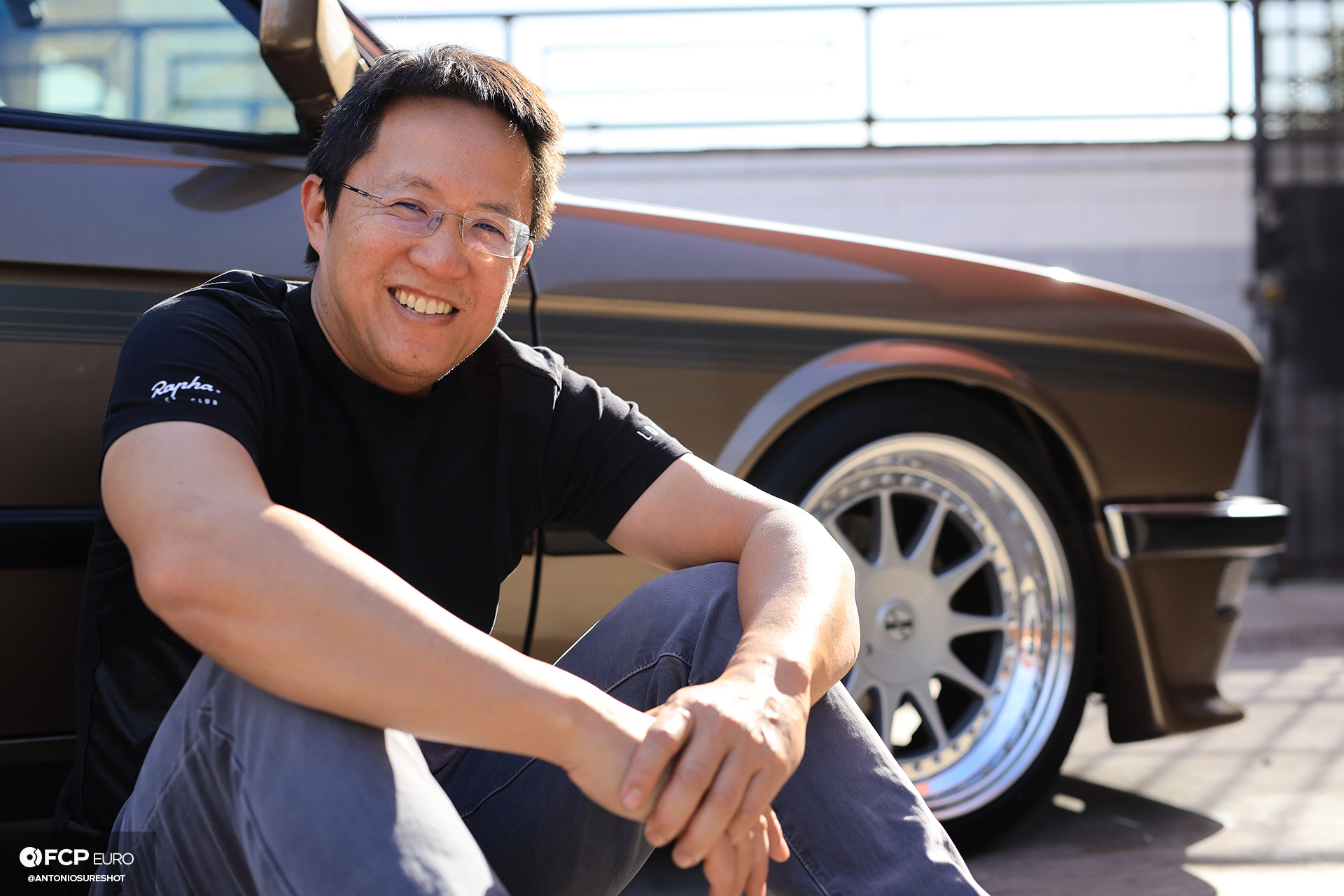
“I’ve always been an enthusiast of the older BMW chassis styles,” said Ken Wong, the owner of this H5S E28, “but I am more enamored with obscure German tuners such as Hartge because of their unique and individual style. I like how they elevate BMWs to another level of personalized performance and aesthetics.”
When asked if he would redo anything about the method in which this car was built, Ken says, “I wouldn’t change a thing. The attention to detail is what sets this car apart from the handful that exist in the US.”
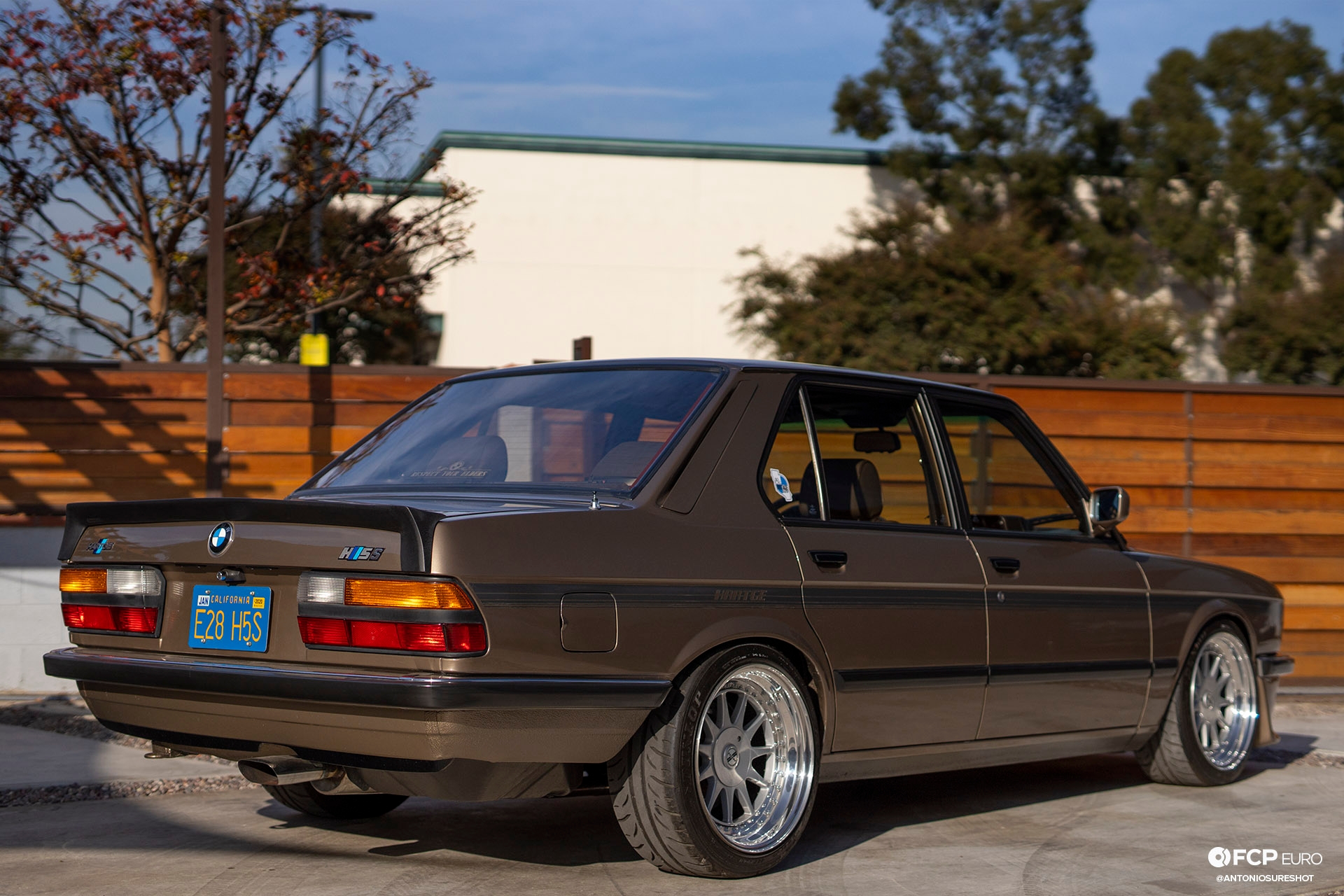
The final detail added to the car was the iconic Hartge stripe. It’s a faithful reproduction of the original one installed from the Hartge factory and its black color is a wonderful subtlety against the Bahama Beige body. Instead of a loud and proud stamping, it’s an addition that simply lets you know it is different from any other E28.
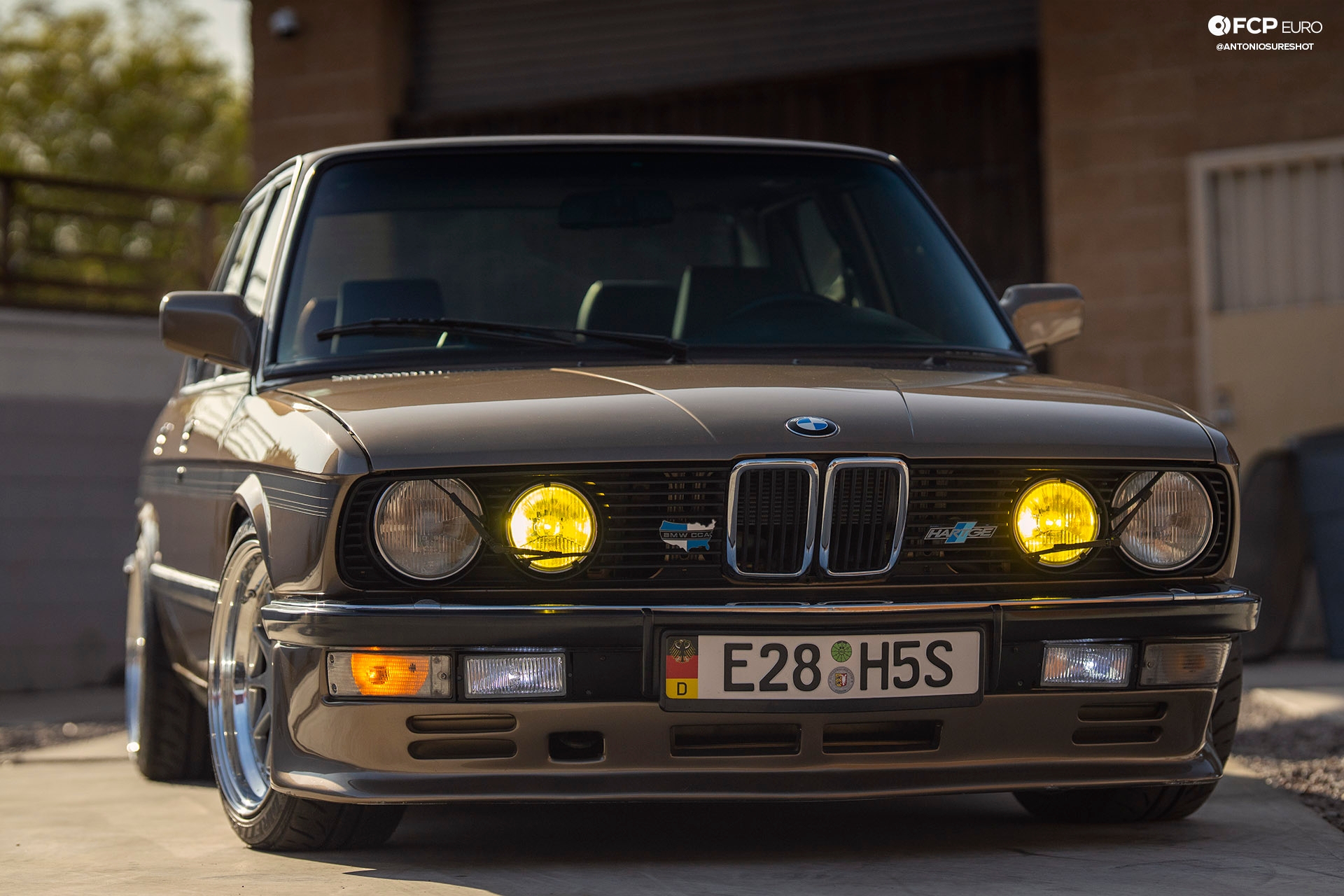
Owning a car isn’t always a fully hands-on affair. However, with a car like this E28 H5S, it’s a preservation of an esoteric history that has been either forgotten or was just not that well known to begin with. It was an original import by one of two official importers of Hartge in North America, and is only one of five known examples to exist here in the United States. While some parts aren’t from the original build list from Germany, all the parts are in the spirit of what Hartge built.
As Ken states, “For me, this car represents how the E28 should have rolled off the assembly line. It’s also a representation of an era of automotive tuning that has long gone. When I was a kid, I was daydreaming about this car and telling myself that I would have one someday. Now, I’m living that dream.”
Story by Justin Banner
Photos by Antonio Alvendia
If you like this BMW E28, you can find additional BMW-related content at bmw.fcpeuro.com, as well as more build features like this one, here. If there's anything specific you would like to see, or if you have any questions/comments, leave them in the comments section below.

